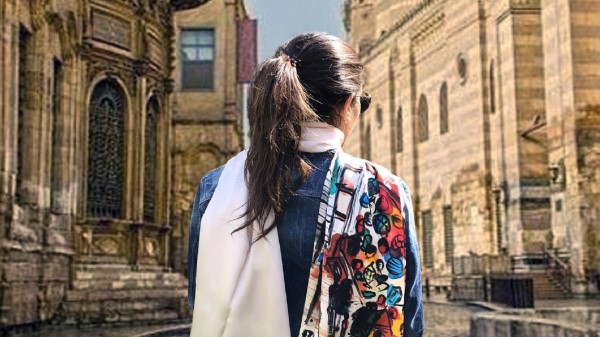The association of vintage clothing with anti-fashion and subcultural street style raises some questions. When did anachronistic dressing become fashionable, not anti-fashion? Why are specific social groups adamant about going back in time? With its relation to Egyptian subcultural distinction practices, how did the ‘vintage style’ become part of the fashion mainstream?
To understand the complexities and subtleties of vintage as a form of expression of subcultural identity, we ought to realize that vintage garments are primarily markers of distinction - a subversion against the norm. The emergence and persistence of vintage clothing in Egypt is not ubiquitous nor significant to all social groups. Youth subcultures have recreated the vintage style, in opposition to existing fashion trends to make an ‘anti-fashion’ statement.
While vintage clothes found in Wekala is sold at a price point that is relatively accessible to lower income customers, it does require cultural capital to recognize pieces and wear them in such a way that reads as fashionable in today’s world. This reinforces the notion that the conscious choice of adopting vintage style predominantly pertains to the Egyptian upper and upper-middle class only. In the last decades one can perceive a striking parallelism between shifting perspective of second-hand trade within different social classes. In the past, it was less respectable for the elite members of society to buy and wear second-hand clothing, today it has become a fad for specific upper and upper-middle class subcultures looking for retro and hip clothing. Today the opposite holds true amongst the lower income groups where you would find that second-hand clothing has developed a shabby reputation over the past decades. In part, this is attributed to the democratization of the fashion styles of the wealthy through mass production.
With ready-to-wear fashion, more available and affordable than ever before, why did Egyptian youth subculture turn to vintage clothes? Vintage clothes emerged in Egypt as a form of rebellion against conformity. Wearers of vintage have voluntarily chosen to set themselves apart from what is considered the norm in the age of mass production to communicate a message to a knowing audience. Making a statement that is explicitly contrary to today’s fashion styles, not only signals the belonging to a group, but also elevates dress to a matter of politics. This sheds light on an ever growing paradox: today, by wearing vintage, the originality of the garment literally rubs off on the wearer, making them stand out; when decades back, the same exact garment was worn by someone else for the opposite purpose - to fit in.
Subcultures reflect a quest for identity and distinction but mainstream fashion inevitably takes over all subcultural styles. The father of existentialism,Søren Kierkegaard said, “truth always rests with the minority, and the minority is always stronger than the majority, because the minority is generally formed by those who really have an opinion, while the strength of a majority is illusory, formed by the gangs who have no opinion.” Vintage was originally a visual representation of subcultural anti-fashion, taken by mega fast fashion retailers like Zara and recycled once more back into a fashionable trend with what seems like the waving of a magic wand. Commerce is a double edge sword - it can either confirm exclusive character, or negate it.
Arguably, the mainstream clothing market was drawn to vintage dressing as a sartorial alternative to other styles in the present-day scene. People who were not at all looking to stand out, but instead fit in followed the trend and embraced the vintage look. The style one might have picked to stand out looks more and more similar to what more people are wearing all of a sudden.
Accompanied by an unsentimental nostalgia, the majority wearing vintage in Egypt are not concerned with the sanctity of tradition. People may yearn for an idealized past, sometimes one they have never even lived through – a mythical ‘golden age’ – and while this could explain why new companies are using vintage branding, or why we find so many vintage inspired shoots on Instagram, I do not think this preoccupation with the ‘good old days’ is strong enough to compel an entire change in an individual’s fashion style. Nor do I believe that the majority of vintage wearers aspire to take part in ethical fashion. Vintage clothing is considered to be a part of sustainable fashion as it is a form of recycling, meaning the consumer isn't supporting the production of new clothes, in attempt to save the environment. The rise of vintage fashion in Egypt is symbolically deployed in opposition to existing mainstream culture by subcultural groups, but since fast fashion is making clothes look vintage, people have followed suit, ironically now conforming to what has been set out as a new trend.





